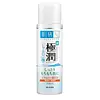What's inside
What's inside
 Key Ingredients
Key Ingredients

 Benefits
Benefits

 Ingredients Side-by-side
Ingredients Side-by-side

Water
Skin ConditioningButylene Glycol
HumectantGlycerin
HumectantPentylene Glycol
Skin ConditioningPropanediol
SolventChondrus Crispus Extract
Skin ConditioningSaccharum Officinarum Extract
MoisturisingSea Water
Humectant1,2-Hexanediol
Skin ConditioningProtease
ExfoliatingBetaine
HumectantPanthenol
Skin ConditioningEthylhexylglycerin
Skin ConditioningAllantoin
Skin ConditioningXanthan Gum
EmulsifyingDisodium EDTA
Water
Skin ConditioningButylene Glycol
HumectantPentylene Glycol
Skin ConditioningDipropylene Glycol
HumectantPPG-10 Methyl Glucose Ether
Skin ConditioningDiglycerin
HumectantPhenoxyethanol
PreservativeDisodium Succinate
MaskingSodium Hyaluronate
HumectantDisodium EDTA
Hydroxyethylcellulose
Emulsion StabilisingSuccinic Acid
BufferingSodium Acetylated Hyaluronate
HumectantHydrolyzed Hyaluronic Acid
HumectantLactococcus/Hyaluronic Acid Ferment Filtrate
Water, Butylene Glycol, Pentylene Glycol, Dipropylene Glycol, PPG-10 Methyl Glucose Ether, Diglycerin, Phenoxyethanol, Disodium Succinate, Sodium Hyaluronate, Disodium EDTA, Hydroxyethylcellulose, Succinic Acid, Sodium Acetylated Hyaluronate, Hydrolyzed Hyaluronic Acid, Lactococcus/Hyaluronic Acid Ferment Filtrate
 Reviews
Reviews

Ingredients Explained
These ingredients are found in both products.
Ingredients higher up in an ingredient list are typically present in a larger amount.
Butylene Glycol (or BG) is used within cosmetic products for a few different reasons:
Overall, Butylene Glycol is a safe and well-rounded ingredient that works well with other ingredients.
Though this ingredient works well with most skin types, some people with sensitive skin may experience a reaction such as allergic rashes, closed comedones, or itchiness.
Learn more about Butylene GlycolDisodium EDTA plays a role in making products more stable by aiding other preservatives.
It is a chelating agent, meaning it neutralizes metal ions that may be found in a product.
Disodium EDTA is a salt of edetic acid and is found to be safe in cosmetic ingredients.
Learn more about Disodium EDTAPentylene glycol is typically used within a product to thicken it. It also adds a smooth, soft, and moisturizing feel to the product. It is naturally found in plants such as sugar beets.
The hydrophilic trait of Pentylene Glycol makes it a humectant. As a humectant, Pentylene Glycol helps draw moisture from the air to your skin. This can help keep your skin hydrated.
This property also makes Pentylene Glycol a great texture enhancer. It can also help thicken or stabilize a product.
Pentylene Glycol also acts as a mild preservative and helps to keep a product microbe-free.
Some people may experience mild eye and skin irritation from Pentylene Glycol. We always recommend speaking with a professional about using this ingredient in your routine.
Pentylene Glycol has a low molecular weight and is part of the 1,2-glycol family.
Learn more about Pentylene GlycolWater. It's the most common cosmetic ingredient of all. You'll usually see it at the top of ingredient lists, meaning that it makes up the largest part of the product.
So why is it so popular? Water most often acts as a solvent - this means that it helps dissolve other ingredients into the formulation.
You'll also recognize water as that liquid we all need to stay alive. If you see this, drink a glass of water. Stay hydrated!
Learn more about Water